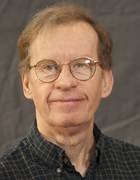Quantum supercomputing: IBM plots roadmap beyond Condor (original) (raw)

zapp2photo - stock.adobe.com
New quantum system and classical computing hybrid forms the basis of next-gen supercomputing at IBM
IBM has bolstered its supercomputing capabilities with the latest iteration of the company’s quantum computer, Quantum System Two. It’s the company’s first modular quantum computer, and represents the cornerstone of IBM’s quantum-centric supercomputing architecture.
The first IBM Quantum System Two, located in Yorktown Heights, New York, has begun operations with three IBM Heron processors and supporting control electronics.
“We are firmly within the era in which quantum computers are being used as a tool to explore new frontiers of science,” said Dario Gil, IBM senior vice-president and director of research. “As we continue to advance how quantum systems can scale and deliver value through modular architectures, we will further increase the quality of a utility-scale quantum technology stack – and put it into the hands of our users and partners, who will push the boundaries of more complex problems.”
Following the company’s quantum computing roadmap, IBM also unveiled Condor, a 1,121 superconducting qubit quantum processor based on what IBM calls “cross-resonance gate technology”.
According to IBM, Condor offers a 50% increase in qubit density and advances in qubit fabrication and laminate size, as well as over a mile of high-density cryogenic flex input/output wiring within a single dilution refrigerator. The new design is said to solve scale, and will be used to inform IBM on future hardware design.
Along with the new hardware, IBM unveiled an extension of its IBM Quantum Development Roadmap to 2033, where it plans to significantly advance the quality of gate operations. If it achieves its roadmap objectives, IBM said it will be able to increase the size of quantum circuits that can be run, which paves the way to realising the full potential of quantum computing at scale.
In a blog post giving an update on IBM’s quantum computing plans, Jay Gambetta, vice-president of IBM Quantum, discussed experiments that demonstrate how quantum computers could run circuits beyond the reach of brute-force classical simulations. “Quantum is now a computational tool, and what makes me most excited is that we can start to advance science in fields beyond quantum computing itself,” he said.
But in the computational architecture Gambetta described, quantum technology will not run standalone. “From these large-scale experiments, it has become clear that we must go beyond the traditional circuit model and take advantage of parallelism, concurrent classical computing and dynamic circuits,” he said.
“We have ample evidence that, with tools such as circuit knitting, we can enhance the reach of quantum computation, and new quantum algorithms are emerging that make use of multiple quantum circuits, potentially in parallel and with concurrent classical operations,” said Gambetta. “It’s clear that a heterogeneous computing architecture consisting of scalable and parallel circuit execution and advanced classical computation is required.”
This, he said, is IBM’s vision for future high-performance systems, which he described as “quantum-centric supercomputing”.
 By: Cliff Saran
By: Cliff Saran  quantum supremacy By: Kate Brush
quantum supremacy By: Kate Brush  Quantinuum quantum systems now support parallel operations
Quantinuum quantum systems now support parallel operations  By: Ed Scannell
By: Ed Scannell  What will a quantum datacentre look like?
What will a quantum datacentre look like?